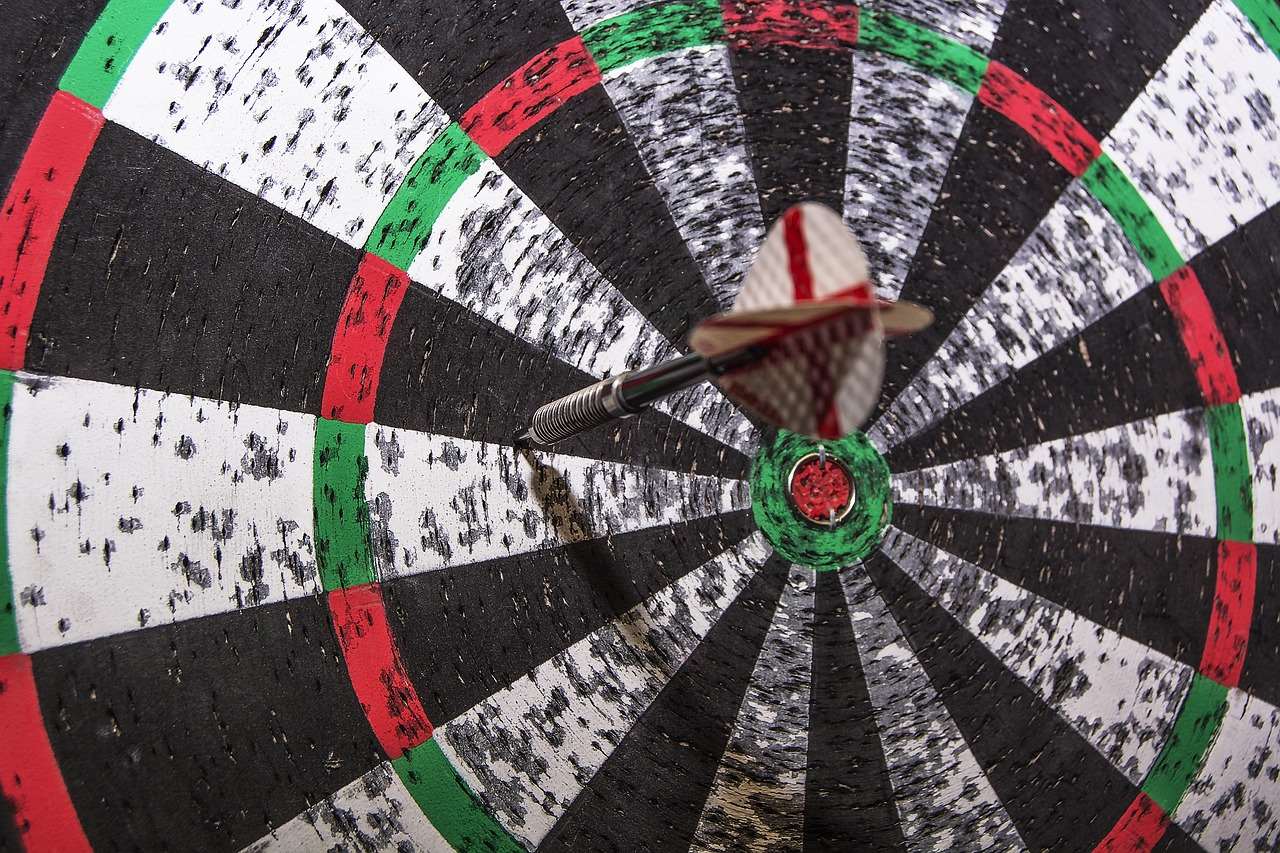Understanding player stat rankings is crucial for informed decision-making, providing a clear overview of a player’s performance and potential. This article will delve into the various statistical categories used to evaluate players, explain how these stats are compiled and interpreted, and offer insights into using them effectively for analysis and prediction.
⚠️ Still Using Pen & Paper (or a Chalkboard)?! ⚠️
Step into the future! The Dart Counter App handles all the scoring, suggests checkouts, and tracks your stats automatically. It's easier than you think!
Try the Smart Dart Counter App FREE!Ready for an upgrade? Click above!
Understanding Player Stat Rankings: A Comprehensive Guide
In the world of sports, data reigns supreme. From professional leagues to casual fantasy drafts, player statistics are used to evaluate performance, predict future outcomes, and make informed decisions. Understanding player stat rankings can be the key to unlocking a competitive edge, whether you’re a seasoned analyst or a casual fan looking to enhance your knowledge. This guide will break down the core concepts of player stat rankings, equipping you with the tools you need to navigate the complex world of sports analytics.

Key Statistical Categories Explained
Different sports utilize a variety of statistics to measure player performance. Here’s a look at some of the most common categories and how they’re used:
Offensive Statistics
Offensive stats quantify a player’s contribution to scoring. Examples include:
- Points Per Game (PPG): This measures the average number of points a player scores in each game. It’s a fundamental indicator of offensive output.
- Goals/Assists: Common in sports like soccer and hockey, these stats track direct goal scoring and passes that lead to goals, respectively. They showcase both individual skill and teamwork.
- Batting Average (AVG): In baseball, this measures the number of hits divided by the number of at-bats, providing a simple measure of hitting proficiency.
- Yards Per Carry (YPC): Used in football, this metric measures the average number of yards gained each time a running back carries the ball.
Defensive Statistics
Defensive stats evaluate a player’s ability to prevent the opposing team from scoring. Examples include:
- Tackles/Interceptions: In football, these stats measure the number of times a player stops an opponent with the ball and the number of times they intercept a pass, respectively.
- Blocks/Steals: In basketball, these stats track the number of times a player blocks a shot and steals the ball from an opponent.
- Saves/Goals Against Average (GAA): Common in hockey and soccer, these stats measure a goalie’s ability to prevent goals. GAA represents the average number of goals allowed per game.
Efficiency Statistics
Efficiency stats provide a more nuanced view of player performance by considering factors like playing time and opportunity. Examples include:
- True Shooting Percentage (TS%): This statistic accounts for field goals, three-point field goals, and free throws, providing a more accurate representation of shooting efficiency.
- Player Efficiency Rating (PER): This complex formula attempts to summarize a player’s overall contribution in a single number.
- Win Shares (WS): This metric estimates the number of wins a player has contributed to their team.
These are just a few examples, and the specific stats that are most relevant will vary depending on the sport. You may want to study more about Darts Betting And Fantasy Leagues Guide.

How Player Stat Rankings Are Calculated
The calculation of player stat rankings often involves a combination of raw statistics and more complex formulas. Raw stats, such as points, rebounds, or tackles, are simply counted and aggregated. However, many rankings use formulas to adjust for factors like playing time, opponent strength, and league averages. Here’s a general overview of the process:
- Data Collection: Accurate and reliable data collection is essential. This involves tracking every relevant action during a game or match.
- Statistical Aggregation: Raw stats are aggregated over a period of time, such as a game, season, or career.
- Formula Application: More advanced rankings apply formulas to normalize data and account for contextual factors. This might involve comparing a player’s performance to the league average or adjusting for the strength of their opponents.
- Ranking Generation: Once the data has been processed, players are ranked based on their statistical performance.
Understanding the formulas used to calculate specific rankings can provide valuable insights into their strengths and limitations. For example, some rankings may heavily weight offensive statistics, while others may prioritize defensive contributions. It’s also valuable to review Using Player Stats For Darts Bets.
Interpreting Player Stat Rankings: Beyond the Numbers
While statistics provide a valuable framework for evaluating players, it’s important to remember that they don’t tell the whole story. Here are some factors to consider when interpreting player stat rankings:
Context Matters
A player’s statistics should always be viewed in context. Factors like team performance, coaching strategies, and injury history can all influence individual stats. A player on a struggling team may have lower stats than they would on a winning team, even if their individual talent is comparable.
Sample Size
Statistical significance increases with sample size. A player’s stats over a few games may not be representative of their true ability. It’s generally better to rely on statistics that are based on a larger number of games or seasons. When it comes to Analyzing Dart Player Form Statistics, we can consider several games to see if there are any recurring issues.
Positional Considerations
Different positions have different statistical benchmarks. A high-scoring forward in basketball will naturally have a higher PPG than a defensive-minded center. It’s important to compare players within their respective positions rather than across all positions.
Beyond the Box Score
Some aspects of player performance are difficult to quantify statistically. Leadership, chemistry, and clutch performance are all important factors that may not be fully reflected in the numbers. Qualitative analysis, such as watching game film or reading scouting reports, can provide a more complete picture of a player’s value. Understanding Player Statistics For Darts Betting will help you find the best players.

Common Pitfalls to Avoid When Using Player Stat Rankings
While player stat rankings can be a valuable tool, it’s important to be aware of their limitations and avoid common pitfalls:
- Overreliance on a Single Statistic: Don’t judge a player solely on one statistic. Consider a range of stats to get a more comprehensive view of their performance.
- Ignoring Contextual Factors: As mentioned earlier, context matters. Be sure to consider factors like team performance, opponent strength, and injury history.
- Assuming Correlation Equals Causation: Just because two things are correlated doesn’t mean that one causes the other. For example, a player’s PPG may be correlated with their team’s winning percentage, but that doesn’t necessarily mean that the player’s scoring is the sole reason for the team’s success.
- Failing to Account for Regression to the Mean: Regression to the mean is the tendency for extreme values to move closer to the average over time. A player who has an unusually good or bad season is likely to see their performance regress towards their career average in subsequent seasons.
Advanced Analytics and Player Evaluation
The field of sports analytics is constantly evolving, with new and more sophisticated methods of player evaluation being developed all the time. Advanced analytics often involve the use of complex statistical models and machine learning algorithms to identify patterns and predict future performance. Here are some examples of advanced analytics techniques:
- Regression Analysis: This statistical technique can be used to identify the factors that are most strongly associated with player performance.
- Clustering Analysis: This technique can be used to group players into clusters based on their statistical profiles.
- Machine Learning: Machine learning algorithms can be used to predict future player performance based on historical data.
While advanced analytics can provide valuable insights, it’s important to remember that they are not foolproof. Statistical models are only as good as the data they are based on, and they can be susceptible to biases and errors. It’s also important to have a strong understanding of the underlying statistical principles before attempting to use advanced analytics techniques.

Tools and Resources for Analyzing Player Stats
Numerous tools and resources are available to help you analyze player stats and rankings:
- Sports Reference Websites: Sites like Basketball-Reference.com, Baseball-Reference.com, and Pro-Football-Reference.com provide comprehensive statistical databases for various sports.
- Fantasy Sports Platforms: Platforms like ESPN, Yahoo, and CBS Sports offer tools and resources for analyzing player stats and creating fantasy teams.
- Sports Analytics Websites: Websites like FiveThirtyEight and The Athletic provide data-driven analysis and insights on various sports topics.
- Statistical Software: Programs like R and Python can be used to perform more advanced statistical analysis on player data.
By leveraging these tools and resources, you can gain a deeper understanding of player performance and make more informed decisions.

Putting it All Together: Improving Your Analysis
Mastering Understanding Player Stat Rankings is a journey that combines statistical knowledge with critical thinking and contextual awareness. Here are some final tips to enhance your analytical skills:
- Stay Updated: The world of sports is constantly changing, so it’s important to stay up-to-date on the latest statistical trends and analytical techniques.
- Develop Your Own Models: As you gain experience, try developing your own statistical models to evaluate players and predict future performance.
- Seek Out Diverse Perspectives: Don’t rely solely on your own analysis. Seek out the opinions of other analysts, coaches, and players to get a more well-rounded perspective.
- Practice Makes Perfect: The more you practice analyzing player stats, the better you’ll become at it.
By following these tips, you can develop your skills and gain a competitive edge in the world of sports analysis. Moreover, it’s important to consider the Player Average Score Analysis Darts to ensure that you are as informed as possible.
Conclusion
Understanding player stat rankings is an essential skill for anyone involved in sports, whether you’re a coach, a scout, a fantasy sports enthusiast, or simply a passionate fan. By mastering the concepts and techniques discussed in this guide, you can gain a deeper appreciation for the complexities of player evaluation and make more informed decisions. Remember to consider the context behind the numbers, avoid common pitfalls, and continuously refine your analytical skills. So, dive into the data, explore the nuances, and unlock the hidden potential within those player statistics. Start your journey into data-driven insights today!
Hi, I’m Dieter, and I created Dartcounter (Dartcounterapp.com). My motivation wasn’t being a darts expert – quite the opposite! When I first started playing, I loved the game but found keeping accurate scores and tracking stats difficult and distracting.
I figured I couldn’t be the only one struggling with this. So, I decided to build a solution: an easy-to-use application that everyone, no matter their experience level, could use to manage scoring effortlessly.
My goal for Dartcounter was simple: let the app handle the numbers – the scoring, the averages, the stats, even checkout suggestions – so players could focus purely on their throw and enjoying the game. It began as a way to solve my own beginner’s problem, and I’m thrilled it has grown into a helpful tool for the wider darts community.